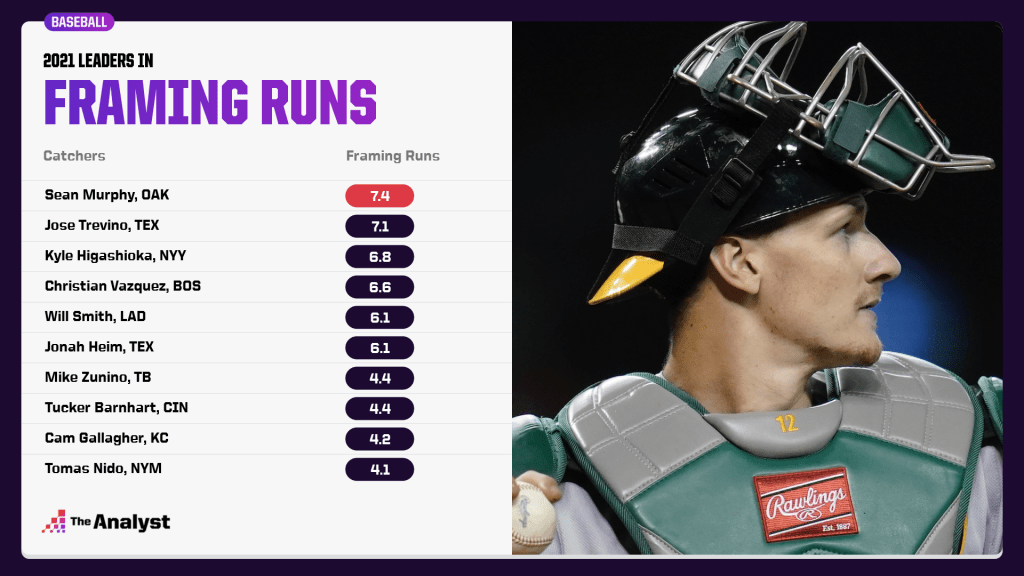We’re digging into the advanced data to discover which players had some of the most remarkable hits, whiffs, home runs and at-bats of the previous seven days.
It was an epic, historic battle that brought the now full-capacity Wrigley Field faithful to its feet even before the at-bat’s fateful last pitch.
It’s probably not too hard to guess the most value-added at-bat of the past week because it was one that marked the longest at-bat to end in a home run by a Chicago Cub in the pitch-tracking era (since 1988). It was also only the fourth time over that span that any player saw at least 14 pitches and hit a home run after falling behind 0-2 in the count.
Anthony Rizzo’s 14-pitch at-bat in Friday’s series opener against the rival St. Louis Cardinals finally resulted in a solo shot that tied a game the hosts would go on to win 7-5.
According to the data, Rizzo received a positive raw value number on 11 of the 14 pitches in the at-bat and earned at least a .02 value on nine of the offerings that weren’t his home run.
How did we determine this? Using all three of the components of raw value+, we’re able to measure how much value a player adds to his offensive line in a single at-bat.
It basically works like this: The batter gets credit for making good decisions and dinged for making bad ones (discipline+) on each pitch, a value for whether he’s able to make contact on his swing (contact+) and how much damage he’s able to do once he makes contact (BIP+).
This is the at-bat everyone remembers from the past week and the data backs its place as the best in terms of value added.
Most Extreme Chase
James Karinchak of the Cleveland Indians has emerged as one of the top relievers in the game over the past two seasons. The fidgety right-hander has converted seven of eight save opportunities and owns a 2.37 ERA while striking out 54 over 30.1 innings this season.
Entering play on Wednesday, Karinchak also ranked sixth in the majors among pitchers who have faced at least 50 batters in whiff+ (166), which measures the ability to generate swings and misses compared to league average (100). He’s also generated a swing and a miss on 37.8% of his pitches so far, which ranks fourth in MLB among those who have worked at least 30 innings.
So, perhaps it’s no surprise that Karinchak has earned our extreme chase of the week for his work here victimizing Pat Valaika in Monday’s 4-3 win over the visiting Baltimore Orioles.
We discover the most extreme chase by using a complex algorithm that finds pitches like the ones we’re looking at here and calculates how frequently those pitches were called strikes – in this case, none.
We then analyze the pitches that had the lowest probability of coaxing a swing over the past week and search for the ones in which the batter malfunctioned and did take a pass at it. This was the worst of the bunch.
Most Unlikely Contact
Tim Anderson of the Chicago White Sox already has one batting title and is hitting a major league-best .327 among those with at least 900 at-bats since the start of the 2019 season.
Entering play Wednesday, the star shortstop’s contact+ was a league-average 100. While not great on the surface, it’s impressive when considering that his discipline+ sat well below the MLB average at 85.
It’s because he’s able to put the bat on the ball on pitches like this and make the most unlikely contact of the past week. Not only did he make contact here in Tuesday’s 3-0 win over the AL East-best Tampa Bay Rays, but it goes down as a line-drive single in the scorebook.
To find the most unlikely contact of the week, we look at the pitches with the lowest probability of contact and then dig into whether any batters somehow made contact on those pitches.
Anderson somehow did, and it helped him add another hit during a red-hot June. He’s hitting .389 – sixth best in MLB – with a home run and five doubles in 13 games this month.
Best Pitch-Framers
Before we start including the best pitch-frames of the week to this list, we’re going to provide an update on which catchers have been the best at this critical skill so far in 2021.
How do we measure framing runs? Command data pushes the called strike probability of a pitch up or down. If the pitcher hits his spot, the called strike probability will be higher and the framing value lower. The expected strike percentage is then used to produce an expected run percentage and that is subtracted from the value of what occurred.
In 2020, no one was better at helping his pitching staff with good framing than Austin Barnes of the Los Angeles Dodgers. The backstop led the majors with 12.2 framing runs a year after finishing 10th.
We equate that as Barnes saved the Dodgers 12.2 runs over the course of 2020. Here’s a look at which catchers entered the week with the most framing runs this season:

The Oakland A’s promising young catcher Sean Murphy leads the majors in framing runs, playing a key role for a rotation that ranks fourth in the American League with a 3.78 ERA.
The Texas Rangers are the only team with a pair of catchers in the top 10 in Trevino and Heim, leading one to wonder where MLB’s 21st-ranked starting staff (4.66 ERA) might be without them.
In case you’re wondering, Barnes ranks 20th so far with 2.1 framing runs. Yasmani Grandal has also been a regular in the top 10, finishing third in 2019 and fifth in 2020. He’s got some work to do to get back there, sitting 16th with 2.4 framing runs entering the week.
Data modeling by Lucas Haupt. Research support provided by Stats Perform’s Tim Bazer. Design by Matt Sisneros.
Enjoy this? Subscribe to our newsletter to receive stories each week from The Analyst. It’s free
